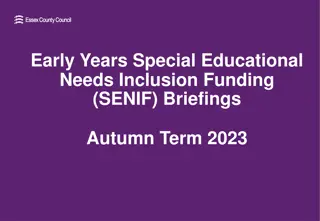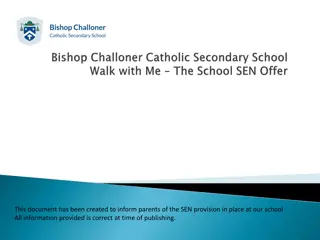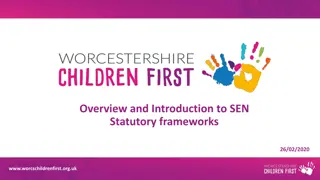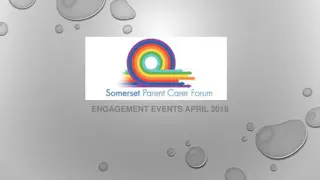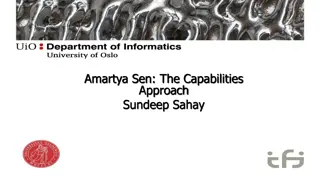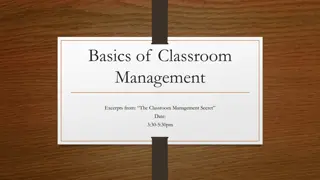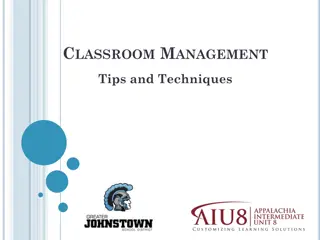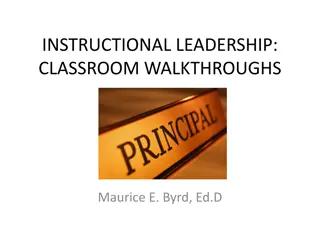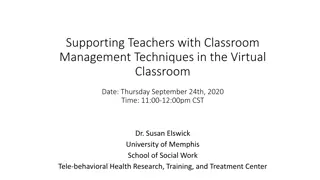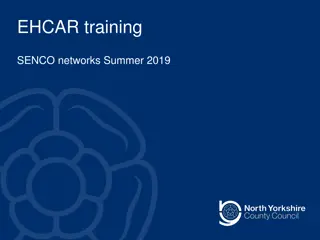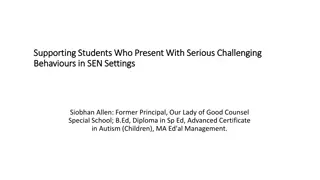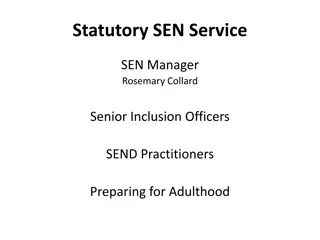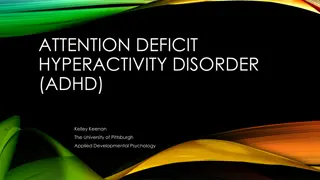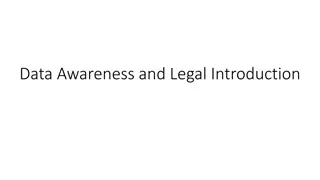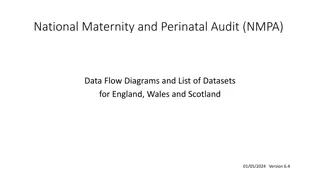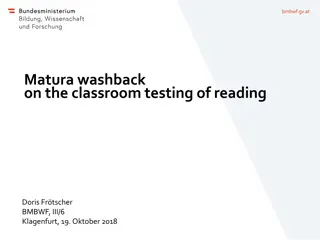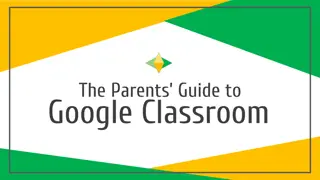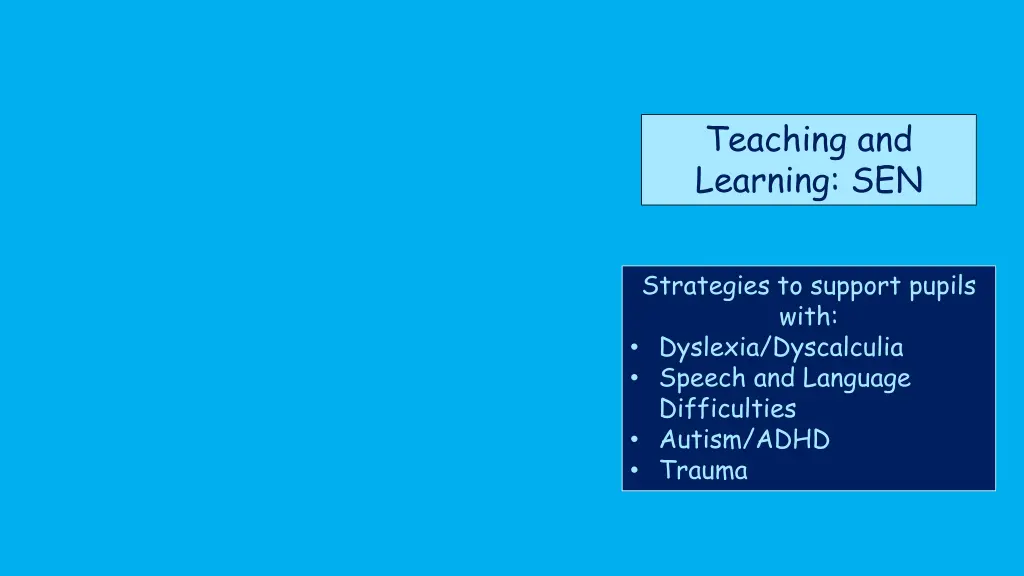
Strategies to Support Students with Dyslexia and Other SEN Challenges
Explore effective strategies and support mechanisms for pupils with dyslexia, dyscalculia, speech and language difficulties, autism, ADHD, and trauma. Learn about dyslexia, its characteristics, strengths, and weaknesses, as well as practical classroom techniques to assist these students academically, emotionally, and behaviorally.
Download Presentation

Please find below an Image/Link to download the presentation.
The content on the website is provided AS IS for your information and personal use only. It may not be sold, licensed, or shared on other websites without obtaining consent from the author. If you encounter any issues during the download, it is possible that the publisher has removed the file from their server.
You are allowed to download the files provided on this website for personal or commercial use, subject to the condition that they are used lawfully. All files are the property of their respective owners.
The content on the website is provided AS IS for your information and personal use only. It may not be sold, licensed, or shared on other websites without obtaining consent from the author.
E N D
Presentation Transcript
Teaching and Learning: SEN Strategies to support pupils with: Dyslexia/Dyscalculia Speech and Language Difficulties Autism/ADHD Trauma
Dyslexia What is it? The NHS: Dyslexia is a common learning difficulty that can cause problems with reading, writing and spelling. It's a specific learning difficulty, which means it causes problems with certain abilities used for learning, such as reading and writing. Unlike a learning disability, intelligence isn't affected. It's estimated up to 1 in every 10 people in the UK has some degree of dyslexia. Dyslexia is a lifelong problem that can present challenges on a daily basis, but support is available to improve reading and writing skills and help those with the problem be successful at school and work The British Dyslexia Association: Dyslexia is a learning difficulty that primarily affects the skills involved in accurate and fluent word reading and spelling. Characteristic features of dyslexia are difficulties in phonological awareness, verbal memory and verbal processing speed. Dyslexia occurs across the range of intellectual abilities. It is best thought of as a continuum, not a distinct category, and there are no clear cut-off points. Co-occurring difficulties may be seen in aspects of language, motor co-ordination, mental calculation, concentration and personal organisation, but these are not, by themselves, markers of dyslexia. A good indication of the severity and persistence of dyslexic difficulties can be gained by examining how the individual responds or has responded to well-founded intervention. In addition to these characteristics: The British Dyslexia Association (BDA) acknowledges the visual and auditory processing difficulties that some individuals with dyslexia can experience, and points out that dyslexic readers can show a combination of abilities and difficulties that affect the learning process. Some also have strengths in other areas, such as design, problem solving, creative skills, interactive skills and oral skills
Dyslexia What do we know about pupils with Dyslexia and their strengths and weaknesses? Can you tell me your thoughts?
Dyslexia How do we support our pupils in the classroom? Limit the number of instructions given at any one time Simplify language as much as possible (but don t sacrifice challenge either!) Limit the stimuli on sheets/ppts Sometimes larger font helps Comic Sans, Century Gothic really helps (it looks like handwriting) Reduce/avoid the amount of reading aloud Do not ask them to copy from the board/text book, give them a copy or the notes in a cloze procedure format Checklists SMART Targets let s achieve! Print out/write homework in planners
Dyslexia How do we support our pupils emotionally and behaviourally? Praise gives power, criticism kills Think outside the box Practice, Practice, Practice let s become a master! Limit your emphasis on SPaG Allow pupils time to think, rushing causes panic as the word is in there somewhere! Listen Provide positive strategies for remembering things like PE Kit, ingredients, timetable etc Remind them to use a reading ruler or fold over the worksheet to limit the volume of reading It s ok to be different, it s to help Mnemonics Daily review and revisit lightbulb moment!
Dyslexia Pupils with diagnosed dyslexia and dyslexic tendencies
Dyscalculia What is it? British Dyslexia Association Dyscalculia is a specific and persistent difficulty in understanding numbers which can lead to a diverse range of difficulties with mathematics. It will be unexpected in relation to age, level of education and experience and occurs across all ages and abilities. Mathematics difficulties are best thought of as a continuum, not a distinct category, and they have many causal factors. Dyscalculia falls at one end of the spectrum and will be distinguishable from other maths issues due to the severity of difficulties with number sense, including subitising, symbolic and non-symbolic magnitude comparison, and ordering. It can occur singly but often co-occurs with other specific learning difficulties, mathematics anxiety and medical conditions Department of Education (2001) DYSCALCULIA is a specific learning difficulty with mathematics, primarily arithmetic. Dyscalculia is a condition that affects the ability to acquire mathematical skills. Dyscalculic learners may have a difficulty understanding simple number concepts, lack an intuitive grasp of numbers, and have problems learning number facts and procedures Even if they produce a correct answer or use a correct method, they may do so mechanically and without confidence.
Dyscalculia What does is look like? How can we support? Chunk information manageable chunks Repeat, repeat, repeat Practice, practice, practice Slow and steady processing speed is limited Use mini-whiteboards/rough working out motivate and vanish Allow self-voice for rote learning ie talk back to themselves or to you Emphasise connections Provide a number line for counting Practice presentation Allow additional time Anxiety fear of being wrong Difficulty subitising looking at a group of objects/dots and knowing how many are there Difficulty identifying which digit symbol represents the bigger numerical quantity Difficulty counting forward, and particularly backwards, from a given number Learning known number facts and mathematical language Unlearning misconceptions with number eg 6+8=16 Poor mental maths Poor sense of direction and left and right Difficulty with time management
Dyscalculia Pupils with diagnosed Dyscalculia
Developmental Language Disorder (DLD) What is it? ICan: Developmental language disorder (DLD) is a condition where children have problems understanding and/or using spoken language. There is no obvious reason for these difficulties, for example, there is no hearing problem or physical disability that explains them. In the past DLD was known as specific language impairment (SLI) but recently the name has changed so that it better reflects the types of difficulties children have. A child can be diagnosed with DLD if their language difficulties are likely to carry on into adulthood; have a significant impact on progress at school, or on everyday life; are unlikely to catch up without help British Dyslexia Association: DLD is a very broad category, with some children having mild problems that are short-lived. Others have severe and persistent difficulties with both understanding and talking. These difficulties are not associated with other conditions, such as cerebral palsy, hearing impairment or autistic spectrum disorders. Children with DLD are often as clever as any other child of their age but they still have difficulties with speech and language.
Developmental Language Disorder (DLD) What do we know about pupils with Developmental Language Disorder and their strengths and weaknesses? Can you tell me your thoughts?
Developmental Language Disorder (DLD) Pupils with diagnosed DLD
Autism (ASC) What is it? National Autistic Society Autism is a lifelong developmental disability that affects how people perceive the world and interact with others. Autistic people see, hear and feel the world differently to other people. If you are autistic, you are autistic for life; autism is not an illness or disease and cannot be 'cured'. Often people feel being autistic is a fundamental aspect of their identity. NHS Autism is not an illness. Being autistic does not mean you have an illness or disease. It means your brain works in a different way from other people. It's something you're born with or first appears when you're very young. If you're autistic, you're autistic your whole life. Autism is not a medical condition with treatments or a "cure". But some people need support to help them with certain things.
Autism (ASC) What do we know about pupils with Autism and their strengths and weaknesses? Can you tell me your thoughts?
Autism (ASC) It is an internalising condition - fewer visible markers for observer; person consumes the world around them and seems absorbed in their own behaviour. Autistic people may: find it hard to communicate and interact with other people find it hard to understand how other people think or feel find things like bright lights or loud noises overwhelming, stressful or uncomfortable get anxious or upset about unfamiliar situations and social events take longer to understand information do or think the same things over and over Single condition with different levels of symptom severity characterised by 1) deficits in social communication and social interaction 2) restricted, repetitive behaviours, interests and activities Both components are required so if no restricted, repetitive behaviours are missing then "social communication disorder" is diagnosed
Autism (ASC) What do we mean by spectrum?
Autism (ASC) How do we support our pupils in the classroom? Help with organisation Be mindful of the amount of writing that you present and they have to write Offer a choice Set expectations, be consistent and follow through Model and scaffold for them to follow Routine Prepare and warn Timer/countdown Keep language simple Allow time to think Keep instructions short and simple Use their name
Autism (ASC) Pupils with diagnosed Autism Undergoing Autism Assessment:
Attention Deficit Hyperactivity Disorder (ADHD) What is it? NHS Attention deficit hyperactivity disorder (ADHD) is a behavioural disorder that includes symptoms such as inattentiveness, hyperactivity and impulsiveness. Symptoms of ADHD tend to be noticed at an early age and may become more noticeable when a child's circumstances change, such as when they start school. Most cases are diagnosed when children are 6 to 12 years old Barkley (1997) "ADHD is not a disorder of knowing what to do, but a disorder of doing what one knows."
ADHD What do we see in the classroom? Inhibiting unplanned responses and stopping oneself from going down an automatic path of behaviour - inhibiting undesirable behaviour. Ignoring distractions: Active inhibitory processes that we take for granted but are extremely demanding for a child with ADHD Great demands on children in the classroom; more so than in adulthood to conform. They are required to sit still, to be quiet at times and solely focus their attention on one teacher talking about some things that they may have no interest to learn.
ADHD Pupils with ADHD may: Often referred to as an externalising condition as it is most apparent in behaviour. Barkley et al (2002) cited 5 main executive abilities that are delayed in children with ADHD - self-regulation ie waiting for a task to finish, building in a pause - the capacity to use and remember visual mental imagery to give foresight - internalised speech, regulate behaviour and talking through activities - self-motivation, to delay gratification for a later reward and to manage one's emotions - planning and problem solving - manipulation of possible solutions and outcomes before acting They have no difficulty concentrating when they are doing something which interests then regardless if it is entertaining/educational - they can be known to hyperfocus eg video game playing for endless hours as video games give continual reward and reinforce engagement, consistent rules an engagement is controllable. Rewards are concrete, frequent, immediate
ADHD How do we support our pupils in the classroom? Keep rules clear and consistent Routine Limit distractions sit at front away from doors or windows Provide frequent and timely feedback Reward good behaviour timely Give them a break where suitable Chunk the work up they will become overloaded and defeatist when presented with what they perceive to be large volumes of work Provide visual support eg scaffolding, modelling etc Colour coding Note taking support Support with organisation Support with presentation Mnemonics Reward systems are very important
ADHD How do we support our pupils emotionally and behaviourally? Make them think that they are in control telling them what to do without them knowing why will force "the wall" up Prepare for change Support with making and maintaining friendships Ask questions rather than reprimand Reminders and prompts and encouragement they do often forget They may have an outburst, remain calm, clear and show that you are still in charge
ADHD Pupils with diagnosed ADHD
SEMH and Trauma What does trauma do to a child? They have a distorted interpretation of themselves, others and the world around them Significant insecurities in their relationships with themselves, other and the world around them because of what has happened to them They may not even know what a feeling is Their bodies are flooded with all kinds of sensations but no-one has shown them or helped them to discriminate between them They have failed to negotiate the developmental stage of dependency Archer & Gordon (2006) " Sadly their first language, their 'mother tongue' is the language of trauma and hurt, based on models of an unsafe and unpredictable world." Bombier (2017) "Every child has a need for safety, security and stability in order to be able to reach their potential, in all aspects of their development"
SEMH and Trauma How do we support our pupils in the classroom? Remember that being caring to them is like another language, they will push against it for the fear of it keep showing you care Do not ask the child to explain their behaviour (they use their pre-frontal cortex: primitive response) Use the process of wondering aloud "I see that you are going red, that is telling me you are angry?" Opportunities for success fragile Set work which is within the zone of proximal development with supportive scaffolding build resilience They need to feel wanted and important (they have learned very quickly that they are irritating and unimportant) Model and encourage suitable responses to upset (whichever means of communication enhanced their survival has become their preferred method of relating: telling them off for it is no use). Look for changes in behaviour: this is their primary means of communication (projection) Be consistent, clear and maintain boundaries Create trust and positive relationship
Books and reading Some literature and websites you may find interesting The art of weeing in the sink by Richie Smith (An adult's experience with autism) My Hidden Chimp by Professor Steve Peters (behaviour awareness) Behaviour Management by Bill Rogers Time to Talk by Jean Gross (Speech and Language) The whole brain child by Dr Daniel J Siegel and Dr Tina P Bryson Attachment for Teachers by Marie Delaney Inside I'm Hurting by Louise Michelle Bomber SEN Support Handout



